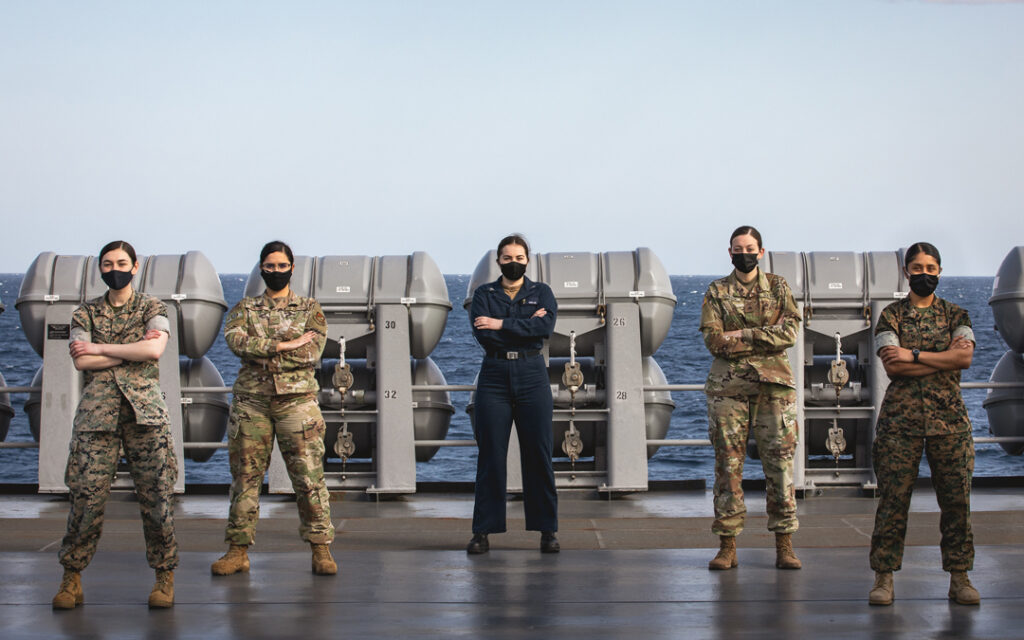THE WATCH STAFF
The William J. Perry Center for Hemispheric Defense Studies held a recent Maritime Security and Gender Integration Workshop that emphasized, in the words of Dr. Veronica De Allende of the Center for Naval Analyses, an important truth: “No nation can afford to ignore half of its population.”
The September 8-9 online dialogue was held in conjunction with U.S. Northern Command and U.S. Southern Command. Both commands incorporate the principles of women, peace and security (WPS) into their strategies and operations. The workshop focused on WPS, which emphasizes the importance of female participation and decision-making in peace and security. It included participants from 15 nations as well as global maritime experts.
“Women, peace, security is about combat readiness,” Adm. Craig S. Faller, commander of U.S. Southern Command, said in opening remarks. “The strength of our society must be reflected in our security forces.”
The speakers emphasized that the role of women is inseparable from maritime issues. They outlined the challenges women face in serving in the navies of U.S. regional partners and in the global shipping industry — from child care to career opportunities to gender discrimination.
“The sea has been regarded as a place for men to work for a long time and has created a lot of stereotypes,” said Dr. Momoko Kitada of the World Maritime University. Through the two days of panels and presentations, the participants heard:
- Women make up only 2% of seafarers in the maritime industry but 70% of trafficking victims, including those trafficked at sea.
- Women now make up 15% of the U.S. Coast Guard and 20% of the U.S. Navy.
- One of the major hurdles facing the Navy is holding on to female enlisted personnel and officers. “The biggest challenge will be retention,” De Allende said. “There need to be policies in place to make sure that women are supported.” One area of need is maternity leave, she said. British Royal Navy Cmdr. Andrew Cheal said that retention is also an issue in his service: “We finally have our first female two-star officer,” he said, “which is long overdue.”
- Panelists stressed that what once was referred to as a “macho culture” is becoming a thing of the past. “Today, this culture is changing in the Navy, especially among the youngest people,” Chilean Navy Capt. Guillermo Ceballos said. “Our main goal today is trying to incorporate women everywhere, and we are taking our time doing this. We want … to avoid mistakes.” (Pictured: Women play key roles on the USS Blue Ridge, which patrols the Indo-Pacific region and is part of the U.S. Navy’s largest forward-deployed fleet.)
Not all are taking such a measured approach.
Dr. Cleopatra Doumbia-Henry, president of World Maritime University, said that attitudinal issues are barriers for women — they may not be viewed as being as fit to do physical labor as men, for example. Henry noted that of the 2% of women in seafaring careers, 98% work in the cruise ship industry. She also mentioned health and safety issues, pointing out that providing separate shipboard berths and bathrooms would result in more women seeking careers at sea.
Marina Colby of the U.S. Department of Labor emphasized that even though women may be rare as seafarers, the abuses they face at sea are all too common. “The right of freedom and association, forced labor, rights to acceptable conditions and work are just some of the issues women face as seafarers,” she said. “Illegal, unregulated fishing is seen as a driver for forced labor in the industry.” Then there are issues of migration and human trafficking.
The challenges, panelists said, can only be met by increasing the representation of women — from military service to serving in maritime law enforcement to crewing commercial vessels.
As Thora Gardiner, human resource officer for the Royal Bahamas Defence Force, said: “The world was created for men, but that shouldn’t stop us from doing what we want to do.”

